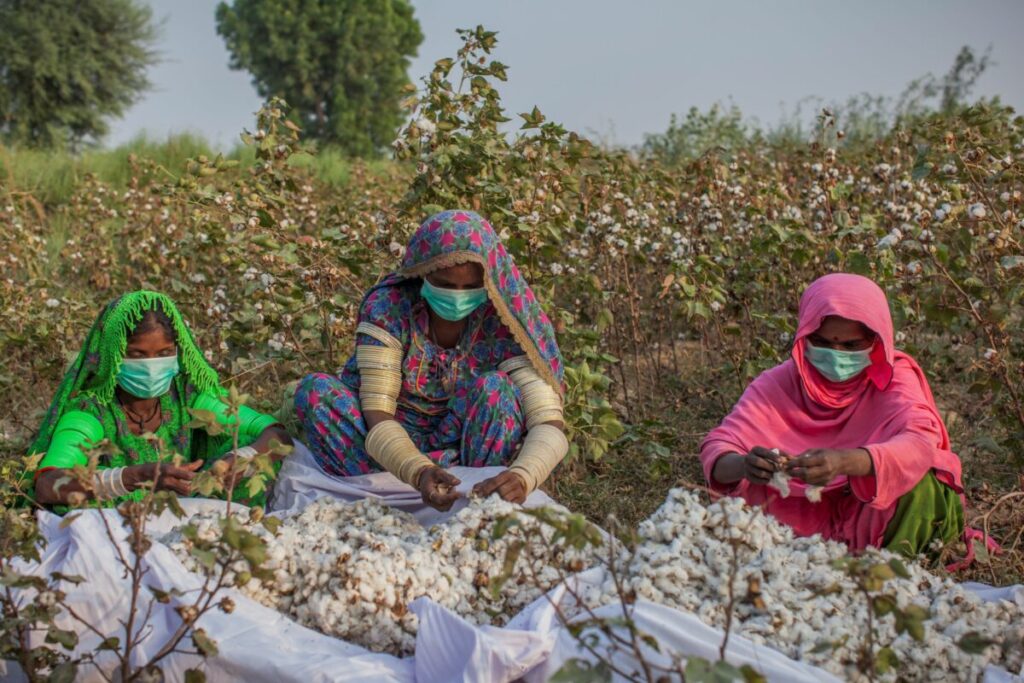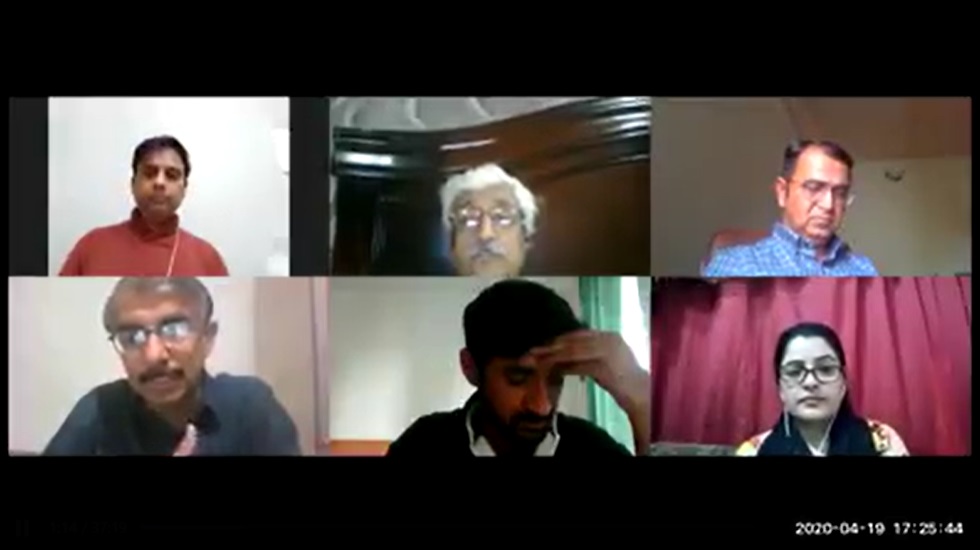By Shujauddin Qureshi
This year’s long spell of monsoon rains and the use of traditional seeds and technology have resulted in a decline in cotton production in Pakistan. Estimates by the Cotton Crop Assessment Committee (CCAC) have cut the target by about 33 per cent, to 10.2 million bales of raw cotton against the earlier estimates of 15 million bales for the year.
The Karachi Cotton Association had also estimated cotton production for the year 2018-19 (in terms of bales of 375 lbs. each) at 14.37 million bales, including 10 million bales for Punjab and 4.2 million bales for Sindh, 0.150 million bales for Balochistan and 0.020 million bales for Khyber Pakhtunkhwa. But this target seems difficult to achieve this year, keeping in view the current arrival figures of lint, experts say.
Pakistan Cotton Ginners` Association (PCGA) statistics indicate that a total of 4.44 million bales had arrived at the market till October 15, which is 1.6 million bales or 26.54 per cent less than 5.044 million bales over the corresponding period during the last year.
This shortfall in production may result in a limited supply of Phutti to the textile and processing mills, thus they may have to import costly products from abroad to meet the demands of export orders.
Besides exporting finished textiles and garments, Pakistan has also been exporting white gold, yarn and grey cloths. However many textile mills import long-staple raw cotton every year, as this variety is not produced in Pakistan.
Earlier, Pakistani textile manufacturers used to buy raw cotton from India at comparatively cheaper rates to meet the shortfall. The import from India, which is the largest cotton-producing country in the world, is now banned after the Modi government’s August 5 decision on the Indian-Held Kashmir, so Pakistani textile manufacturers have to rely on imports from countries like China, Turkey and Uzbekistan. The US is the second largest producer in the world and Brazil the fourth but imports from American countries would be quite costly for Pakistani manufacturers due to longer distances and heavy freight costs.

Cotton Exports
Pakistan is the fifth-largest cotton-producing country in the world. Its textile producers need at least 16 million bales annually to meet the local and international textile products demand. Besides consuming locally-produced cotton, the textile mills also have to import. This year import of at least 5 million bales is expected, which may require 1.5 billion dollars.
Experts believe that importing raw cotton to produce value-added textiles for exports is not bad for the economy. Bangladesh has done the same for many years. Its exports of textiles and garments have increased manifold even though the country does not produce cotton.
Imported longer-staple cotton is better in quality than locally-produced raw cotton. “Textile exporters usually prefer to add some quality of the imported cotton to their products,” says Arsalan Hanif, a researcher at Arif Habib Limited Securities.
According to Hanif, the government has shown little interest in increasing crop
production and state’s research institutes seldom do any research and development for improving the quality of locally-produced seed.
Increasing imports has always been a challenge for Pakistan’s economy as the country has been suffering from a huge trade deficit problem for many years on account of an increased reliance on imported goods, raw materials and machinery.
Stagnant exports have resulted in wider gaps between imports and exports in recent years. Textile and allied exports for over 60 per cent of the exports from Pakistan. There has been no increase in their value.
Pakistan earned $22,958 million from exports whereas imports stood at $54,763 million during the fiscal year 2018-19 against exports of $23,212 million and imports worth $60,795 million during the fiscal year 2017-18.
Last year’s massive devaluation of the rupee also failed to have any positive impact on Pakistani exports, despite the fact one of the major demands from the key textile exporters’ associations had been the currency depreciation to help boost the exports in a competitive international market.
According to official statistics, cotton output growth had declined from a low average of 3 per cent over the period between 1990 to 2015 to negative 3 per cent over 2016-2018 and has further plunged to negative 17.5 per cent in 2018-19.
According to the Economic Survey of Pakistan 2018-19 report, during the fiscal year 2018-2019, local production remained at 9.86 million bales against 11.95 million bales in the previous fiscal year, thus showing a decline of 17.5 per cent.
Despite the fact this year the white gold was grown in more areas in both the Punjab and Sindh the production is feared to be lesser than the initial estimates. The official sources indicated that this year’s sowing target was 2.78 million hectares.
“This year cotton production has declined due to several reasons, including supply of inferior-quality pesticides and seeds,” says Haresh Kumar Vedani, senior vice chairman of Pakistan Cotton Ginners Association (PCGA). Shortage of irrigation water from the Indus River, pests and locust attacks in lower Sindh districts further added to the low crop prospects in the province. Although the share of Sindh in the production of raw cotton is low, the yield per acre in Sindh is more than in southern Punjab.
Talking to TNS, Vedani says in Sindh the provincial government collects various taxes from growers and ginners for research and development of seeds and development of new varieties, “but nothing is spent on improvement of seeds’ quality. We are using decades-old seeds, whose productivity is declining with time,” he adds.
The Sindh government has meanwhile raised the cotton tax from the previous 4 per cent to 8 per cent this year. The Federal Excise Duty has also been raised on ginning factories. This has caused heavy losses to the cotton growers. The main victims of the interventions are workers, especially cotton pickers, women mostly.
This situation has not been helped by many state institutions for the production of cotton, including the Pakistan Central Cotton Committee under the Ministry of National Food Security and Research and Pakistan Cotton Standards Institute (PCSI) under the administrative control of Textile Division, the Ministry for Commerce and Textile, Government of Pakistan. A Cotton Exchange is also working in Karachi for daily trading of cotton bales.
Originally published in The News on Sunday




